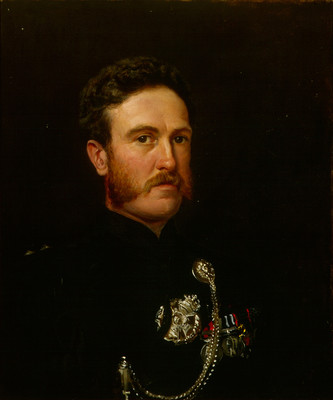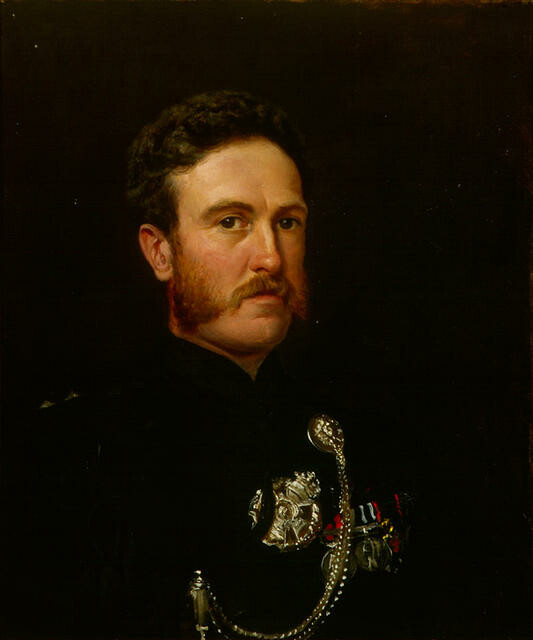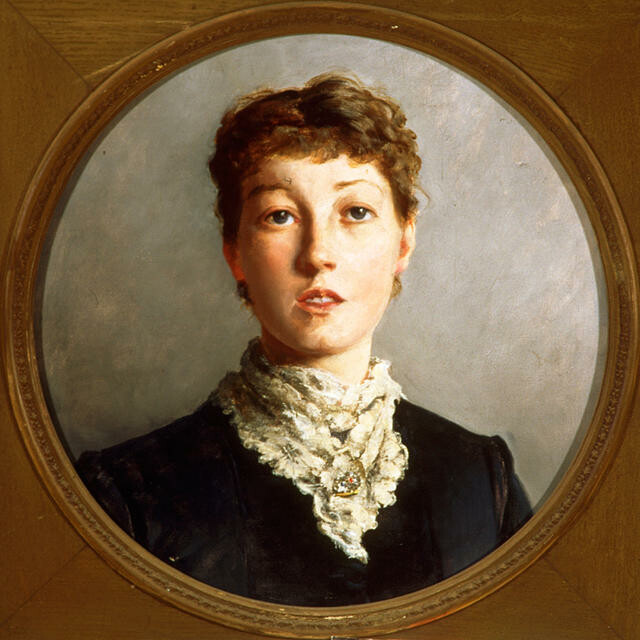B.
Sir Neville Lyttelton by Archibald Stuart-Wortley
Collection
This article first appeared as 'Soldier on' in The Press on 26 July 2013

Archibald Stuart-Wortley Sir Neville Lyttelton
Collection of Christchurhc Art Gallery Te Puna o Waiwhetū; transferred from Banks Peninsula District Council, 2006
The subject of this portrait, Sir Neville Lyttelton, had a long and active military career yet managed to write an autobiography that is strikingly dull. Its title, 'Eighty years soldiering, politics, games' is awkward and the style reads like an official report. One of his superiors described him as 'the dullest dog I've ever met.' When he wrote this book, Sir Neville was Governor of the Royal Military Hospital at Chelsea in which position he spent the last 19 years of his life.
As a professional soldier though, he had served in India, Gibraltar, Canada and Ireland and had seen very real active service in the Boer War. He retired in 1912 as Commander-in-Chief, Ireland, a posting not without poignancy as his own brother-in-law, Lord Frederick Cavendish, had been a victim of Irish nationalism in the Phoenix Park murders in 1882. As well as this link to the Cavendish family, the Lytteltons could claim ties to half the landed gentry of England: Spencers, Montagus, Talbots and Buckinghams among them. His mother and Prime Minister William Gladstone's wife were sisters; his father George was the chairman of the Canterbury Association, after whom the port of Lyttelton is named.
Despite this establishment upbringing and such valuable connections, his letters to his wife, many written while on service abroad, reveal his continuous anxiety about money. Social obligations such as travel and entertainment made constant demands on his limited means. The family were certainly not fabulously rich and he, as a younger son who had not married money, was often financially straitened.
A letter in the National Portrait Gallery in London has allowed us to identify the painter of this portrait as Archibald Stuart-Wortley, who was Sir Neville's brother-in-law. This letter states that he was painted in his Rifle Brigade uniform in 1893, making him about 44 in this portrait.
Stuart-Wortley was a more then competent society portraitist whose real passion was hunting and shooting. When the Duke of Beaufort commissioned the Badminton series of manuals on country pursuits, Stuart Wortley was the obvious choice to provide the line illustrations as he combined sporting knowledge with artistic ability. He is reported to have lost money in a South African mining venture and to have suffered what would now be called a nervous breakdown. He died in Moorcroft House asylum in West London.
This painting was transferred to the Gallery's collection from the former Banks Peninsula District Council in 2006 but it is not entirely clear how it came to New Zealand. Possible routes include either Sir Neville Lyttelton's great-nephew, Viscount Cobham who was Governor General from 1957-62, or his grand-daughter Laura Fergusson, wife of another Governor General, Sir Bernard Fergusson. We would welcome any information about either of these possibilities.
Tim Jones

